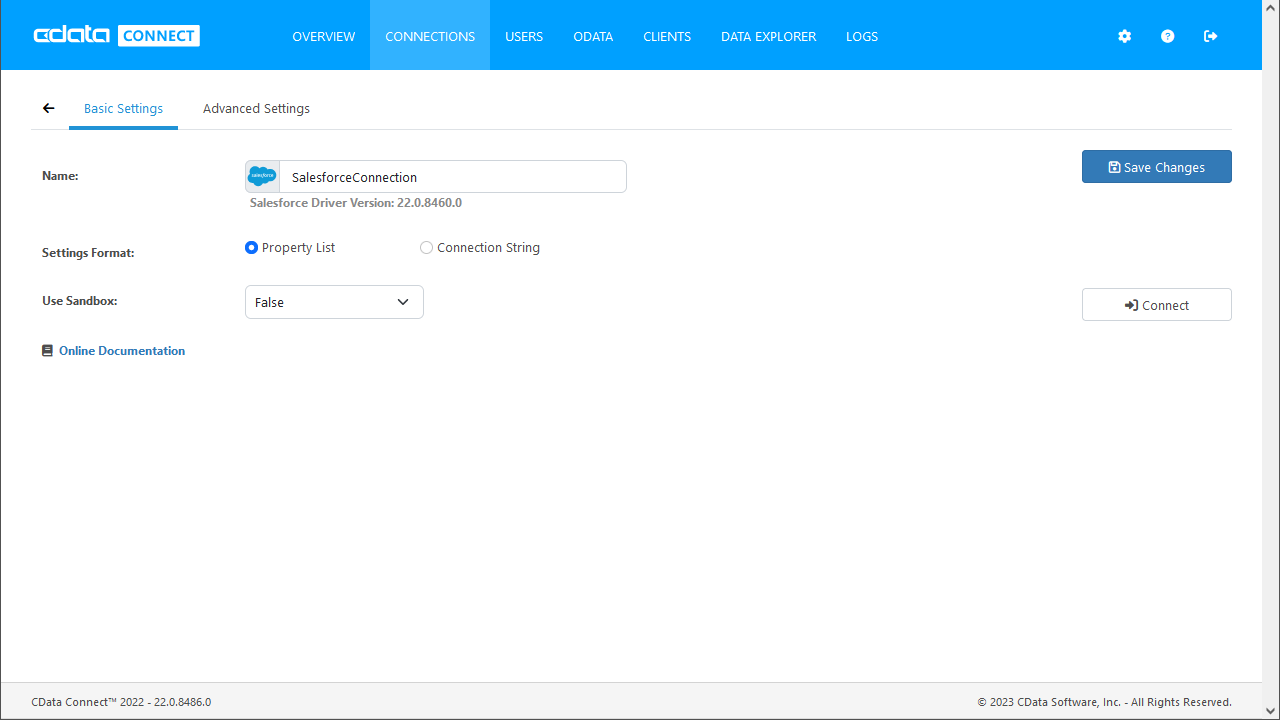Model Context Protocol (MCP) finally gives AI models a way to access the business data needed to make them really useful at work. CData MCP Servers have the depth and performance to make sure AI has access to all of the answers.
Try them now for free →Access Databricks Data in PHP through Connect Server
Connect to Databricks through the standard SQL Server libraries in PHP.
You can use CData Connect Server to access Databricks data from SQL Server clients, without needing to perform an ETL or cache data. Follow the steps below to create a virtual SQL Server database for Databricks and connect to Databricks data in real time through PHP's standard SQL Server interface, i.e. sqlsrv_connect.
CData Connect Server provides a pure SQL Server interface for Databricks, allowing you to easily build reports from live Databricks data in PHP — without replicating the data to a natively supported database. As you build visualizations, PHP generates SQL queries to gather data. Using optimized data processing out of the box, CData Connect Server pushes all supported SQL operations (filters, JOINs, etc) directly to Databricks, leveraging server-side processing to quickly return the requested Databricks data.
About Databricks Data Integration
Accessing and integrating live data from Databricks has never been easier with CData. Customers rely on CData connectivity to:
- Access all versions of Databricks from Runtime Versions 9.1 - 13.X to both the Pro and Classic Databricks SQL versions.
- Leave Databricks in their preferred environment thanks to compatibility with any hosting solution.
- Secure authenticate in a variety of ways, including personal access token, Azure Service Principal, and Azure AD.
- Upload data to Databricks using Databricks File System, Azure Blog Storage, and AWS S3 Storage.
While many customers are using CData's solutions to migrate data from different systems into their Databricks data lakehouse, several customers use our live connectivity solutions to federate connectivity between their databases and Databricks. These customers are using SQL Server Linked Servers or Polybase to get live access to Databricks from within their existing RDBMs.
Read more about common Databricks use-cases and how CData's solutions help solve data problems in our blog: What is Databricks Used For? 6 Use Cases.
Getting Started
Create a Virtual SQL Server Database for Databricks Data
CData Connect Server uses a straightforward, point-and-click interface to connect to data sources and generate APIs.
-
Login to Connect Server and click Connections.
![Adding a connection]()
- Select "Databricks" from Available Data Sources.
-
Enter the necessary authentication properties to connect to Databricks.
To connect to a Databricks cluster, set the properties as described below.
Note: The needed values can be found in your Databricks instance by navigating to Clusters, and selecting the desired cluster, and selecting the JDBC/ODBC tab under Advanced Options.
- Server: Set to the Server Hostname of your Databricks cluster.
- HTTPPath: Set to the HTTP Path of your Databricks cluster.
- Token: Set to your personal access token (this value can be obtained by navigating to the User Settings page of your Databricks instance and selecting the Access Tokens tab).
![Configuring a connection (SQL Server is shown).]()
- Click Save Changes
- Click Privileges -> Add and add the new user (or an existing user) with the appropriate permissions.
With the virtual database created, you are ready to connect to Databricks data from PHP.
Connect in PHP
The following examples show how to use object-oriented interfaces to connect and execute queries. Initialize the connection object with the following parameters to connect to the virtual SQL Server database:
- Server name/Host: Specify the remote host location where the service is running.
- Username: Specify the username for a user you authorized in Connect Server.
- Password: Specify the password for the authorized user account.
- Database Name: Specify the name of the virtual database you created for Databricks.
- Port: Specify the port the service is running on, port 1433 in this example.
sqlsrv_connect
<?php
$serverName = "connect_server_url, 1433"; //Connect Server Address, portNumber (default is 1433)
$connectionInfo = array( "Database"=>"Databricks1", "UID"=>"userName", "PWD"=>"password");
$conn = sqlsrv_connect( $serverName, $connectionInfo);
if( $conn ) {
echo "Connection established.<br>";
}else{
echo "Connection could not be established.<br>";
die( print_r( sqlsrv_errors(), true));
}
?>
PDO
<?php
<?php
$user = my_connect_user
$pass = my_connect_pass
$pdo = new PDO("sqlsrv:Server=connect_server_url,1433;Database=Databricks1", $user , $pass);
?>
Query in PHP
With the connection established, you can then access tables. The following steps walk through the example:
- Query the table; for example, Customers. The results will be stored as an associative array in the $result object.
- Iterate over each row and column, printing the values to display in the PHP page.
- Close the connection.
sqlsrv_connect
$result = $sqlsrv_connect->query("SELECT City, CompanyName FROM Customers WHERE Country = 'US'");
while($row = $result->fetch_assoc()) {
foreach ($row as $k=>$v) {
echo "$k : $v";
echo "<br>";
}
}
$sqlsrv_connect->close();
PDO
$result = $pdo->query("SELECT City, CompanyName FROM Customers WHERE Country = 'US'");
while($row = $result->fetch(PDO::FETCH_ASSOC)) {
foreach ($row as $k=>$v) {
echo "$k : $v";
echo "<br>";
}
}
$result = null;
$pdo = null;
SQL Server Access to Databricks Data using PHP
You have retrieved live Databricks Data using PHP. Now, you can easily access data sources and more — all without replicating Databricks data.
To get SQL data access to 200+ SaaS, Big Data, and NoSQL sources directly from your applications, try CData Connect Server.



